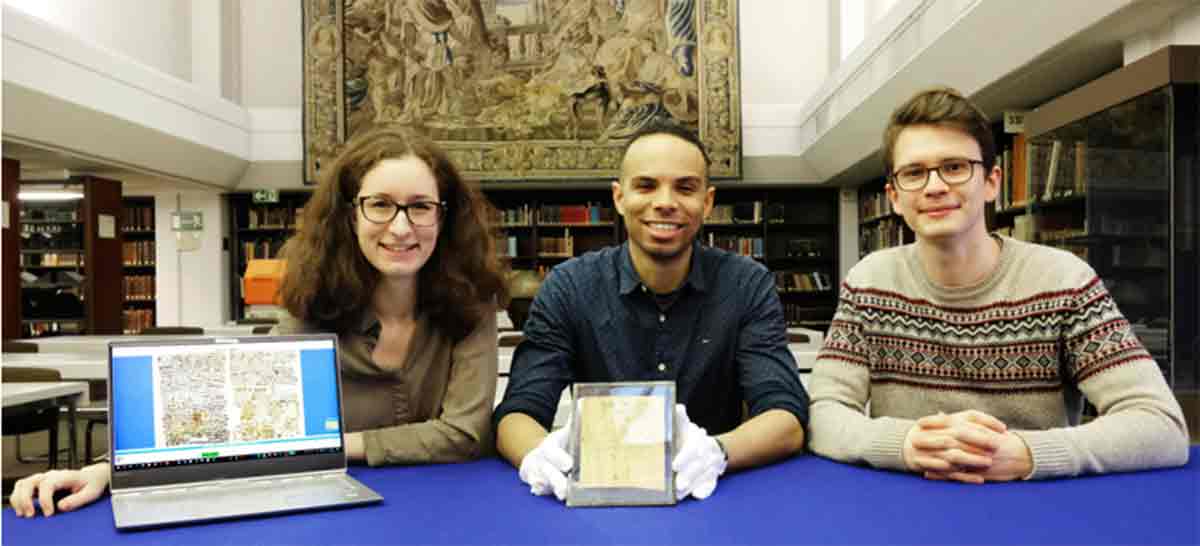Translated Egyptian Magical Texts Map Human Emotions
After five years of research two German scientists have published translations of a collection of Egyptian magical texts. Cutting through the love spells, curses and protection rituals, this work presents a map of human emotions from the time that the old gods of Egypt were slaughtered to make way for Christianity.
The First Comprehensive Magical Coptic Collective
Dating between the 4th and 12th centuries AD, these magical Egyptian texts were written on papyrus, parchment, paper and shards of clay. Now, after five years, two researchers at the Chair of Egyptology at Julius-Maximilians-Universität Würzburg (JMU) in Germany, Doctors Markéta Preininger and Korshi Dosoo, have completed translating the first volume.
The celebrated papyrologist, Karl Preisendanz, first published the collection of texts under the name “Papyri Graecae Magicae (PGM) in 1928, which was later changed to “Papyri Demoticae Magicae.” But until now, a comprehensive collection of magical texts in Coptic script and language had never been compiled. The Coptic Magical Papyri research project recently announced its publication of a new 600-page book titled "Papyri Copticae Magicae".
- Edwin Smith Papyrus: 3,600-Year-Old Surgical Treatise Reveals Egyptian Medical Knowledge
- Ancient Advanced Technology Reveals Itself in Egyptian Papyrus Ink

The part of a papyrus shows the archangel Michael, who is accompanied by two angelic powers. Such images were used for many ritual purposes, for example to heal illnesses, drive out evil demons, protect against robbers or curse other people. (Elke Fuchs / Institut für Papyrologie, Universität Heidelberg)
The Largest Published Collection To Date
The magical texts were written in Coptic script and language, which played a crucial role in Egypt's history, serving as the final stage of the Egyptian language. Blending the Coptic and Greek alphabets, and using Demotic characters, Coptic was the preferred language of Christian Egyptians until it eventually replaced Demotic around the 2nd century AD. In a PHYS article, Dr. Korshi Dosoo said that the 600 texts represent “the largest published collection to date”.
Hidden in houses, or worn in neck amulets, magical texts were imbued with the powers of prophecy, healing, cursing, and evoking love and hatred. And in this instance, the scientists said the magical papyrus were used “to help its wearer become pregnant,” and for “the appeasement of enemies and the fulfilment of specific wishes.”
- The Ebers Papyrus: Medico-Magical Beliefs Revealed in Ancient Egyptian Medical Text
- First Public Display of 16-meter-long Papyrus Found in Saqqara Casket

Part of a fragmentary manuscript from which three Coptic healing recipes were recently published by project member Markéta Preininger. (Image by courtesy of the Bibliothèque nationalede France, Département desManuscrits/Degruyter)
Mapping Ancient Egyptian Emotions
Dr. Markéta Preininger Svobodova said the magical texts disclose information about “popular religion - the reality, rather than the ideal, of religious practices and beliefs as they were lived and practiced in everyday life.” Furthermore, the researchers said the texts illustrate the “transition from traditional Egyptian religion to Christianity…” and people’s emotional response to this social change.
Dr. Korshi Dosoo explains that while the Christianization of Egypt revolutionized traditional cult worship of a pantheon of deities, “it did not end the belief in a world full of superhuman powers.” It was not the job of the first Christian theologians and missionaries to extinguish “all” existing religious practices, but to strategically incorporate some of the elements into the emerging Christian narrative.
The Death And Rebirth of Selected Egyptian Gods
Christians hung Nuit, the ancestral goddess of the cosmos and mother of all things. And they decapitated her partner Hadit, who represented the inner divine spark or individual consciousness of Egyptians. The attributes associated with sun god Ra, however, who was associated with universal creation, were fused into the Christian Trinity: God the Father, Jesus Christ the Son, and the Holy Spirit.
Perhaps the simplest example of conversion was the Egyptian goddess Isis who was worshipped as a multifaceted goddess, with roles ranging from motherhood and fertility to magic and protection. Isis was the perfect fit for the similarly described Virgin Mary, and it was this syncretic approach eased the transition, allowing Christian beliefs to gradually supersede the worship of ancient gods in Egypt.
And to further lubricate this change, Christian rituals were adapted to coincide with existing Egyptian festivals and ceremonies, creating a sense of continuity and progression for the people. For these reasons, the two JMU researchers said the manuscripts are "rich sources of information about daily life and religion in Egypt in the last centuries of Roman rule and the first centuries after the Arab conquest".
Magical Pathworking into the Future
Promising to take us all deeper into the mechanics of ancient Egyptian love spells and curses, the two scientists were recently approved by the German Research Foundation (DFG) to launch their new project: the Corpus of Coptic Magical Formularies. It is expected that in around three years we will be presented with another book, essentially mapping the emotional states of the Egyptian people who witnessed the collapse, or evolution, of a 3,000-year-old system of beliefs.
It should be considered that successful religious conversion requires a majority of public support, and while many lamented the death of the old gods, many more celebrated the change. Perhaps you too would have preferred the comparative ease of worshipping one god, rather than a complex pantheon of gods, goddesses, energies, and spirits, each with their own rituals and calendars.
Top image: The project team at the start of work at the end of 2018 in the University Library's manuscript collection with (from left) Markéta Preininger, Korshi Dosoo and Edward O. D. Love. Source: Gunnar Bartsch / Universität Würzburg
By Ashley Cowie

















